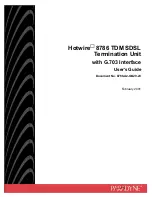
Appendix 0: Status model
Model DMM7510 7½ Digit Graphical Sampling Multimeter Reference Manual
14
DMM7510-901-01 Rev. B / May 2015
Understanding bit settings
When you write to or read a status register, you can use binary, decimal, or hexadecimal values to
represent the binary values of the bit states. When the value is converted to its binary equivalent, you
can determine which bits are set on or clear. Zero (0) indicates that all bits are clear.
In the Model DMM7510, the least significant bit is always bit B0. The most significant bit differs for
each register, but in most cases is either bit B7 or bit B15.
Bit position
B7
B6
B5
B4
B3
B2
B1
B0
Binary value
1000
0000
0100
0000
0010
0000
0001
0000
1000
0100
0010
0000
Decimal value
128
64
32
16
8
4
2
1
Weight
2
7
2
6
2
5
2
4
2
3
2
2
2
1
2
0
Bit position
B15
B14
B13
B12
B11
B10
B9
B8
Binary value
1000
0000
0000
0000
0100
0000
0000
0000
0010
0000
0000
0000
0001
0000
0000
0000
1000
0000
0000
0100
0000
0000
0010
0000
0000
0001
0000
0000
Decimal value
32768
16384
8192
4096
2048
1024
512
256
Weight
2
15
2
14
2
13
2
12
2
11
2
10
2
9
2
8
For example, if a value of
1.02
(which is 129) is read as the value of the condition register,
the binary equivalent is 0000 0000 1000 0001. This value indicates that bit B0 and bit B7 are set and
all other bits are cleared.
For example, if you read a value of 1.04 (12,288) for the condition register, the binary
equivalent is 0011 0000 0000 0000. This value indicates that bits B12 and B13 are set.
B15
B14
B13
B12
B11
B10
B9
B8
B7
B6
B5
B4
B3
B2
B1
B0
32768
16384 8192 4096 2048 1024 512 256 128 64
32
16
8
4
2
1
0
0
1
1
0
0
0
0
0
0
0
0
0
0
0
0
When bit B12 (4096) and bit B13 (8192) are set (1), the decimal equivalent is 4096 + 8192 = 12,288.










































